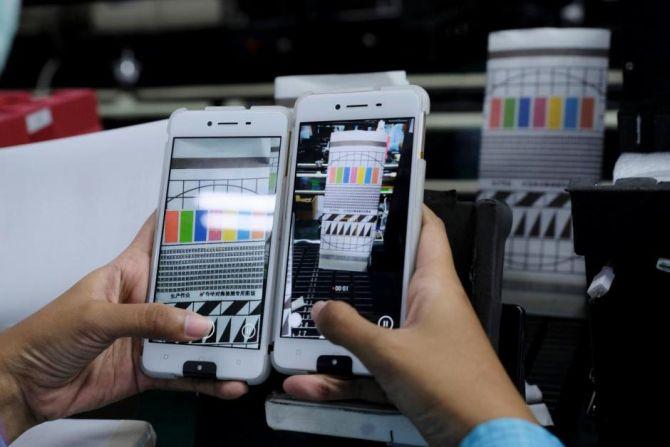The first half of the year (H1-2020) was marked by sluggish growth with demand down 26 per cent YoY, while the second half saw recovery. H2-2020 recovered with 19 per cent YoY growth, reports Shivani Shinde.

Stay-at-home mandates, remote work, remote education, travel restrictions, and manufacturing shutdowns impacted the India smartphone market, which exited CY2020 at 150 million units, down 1.7 per cent year-on-year, said the report by International Data Corporation’s (IDC).
The first half of the year (H1-2020) was marked by sluggish growth with demand down 26 per cent YoY, while the second half saw recovery. H2-2020 recovered with 19 per cent YoY growth.
Lockdowns and restrictions rendered an urgent need for devices supporting activities such as entertainment, work from home, and remote learning, resulting in more devices per household, and leading to a resurgence in demand for consumer devices including smartphones, consumer notebooks, and tablets in 2020, said the IDC report.
The fourth quarter of CY2020 (October-December) posted record fourth-quarter smartphone shipments of 45 million devices, with 21 per cent YoY growth. While smartphone shipments for the full year 2020 remained below the pre-pandemic level, IDC believes a stronger market acceleration in 2021 will be led by upgrades.
“The rebound of the smartphone market in the latter half of 2020 underscores the importance of devices in our day-to-day lives. In 2021, IDC expects the smartphone market to grow in high single-digit YoY, driven majorly by upgrading consumers, in the mid-range segment and affordable 5G offerings (at about $250). Also, revamped offline channel play is anticipated, to bring back growth in the very important brick and mortar counters for long-term sustainability,” said Navkendar Singh, Research Director, Client Devices & IPDS, IDC India in a statement.
In terms of handset vendors, Xiaomi's performance in 2020 was led by its affordable Redmi 8 series, gradually replaced by the Redmi 9 series in H2-2020. Though it continued to face supply shortages through H2-2020, resulting in an annual decline, Xiaomi maintained its leadership in 2020. POCO, Xiaomi's sub-brand, entered the "top 5 online channel vendor list", strengthening Xiaomi's online position at 39 per cent share in 2020.
Samsung remained in its second spot in the 2020 ranking, with its online-heavy portfolio driven by the Galaxy M series and the newly launched F series. Online channel registered strong 65 per cent YoY growth, while the offline channel shipments declined by 28 per cent, thus leading to an overall drop of 4 per cent in 2020.
Vivo stood at the third position, with strong growth in the offline channel, dethroning Samsung for the leadership position in the offline channel with 30 per cent share, driven by the affordable Y series and dedicated efforts in marketing and promotional activities in offline channels, said IDC.
Realme surpassed OPPO for the fourth slot with 19 million annual shipments, growing by 19 per cent YoY in 2020. It continued to be the second-largest online vendor, with its affordable C-series as a major driver.
Apple, at the seventh slot, exited 2020 with YoY growth of 93 per cent, driven by previous generation products like the iPhone 11, iPhone SE (2020), and iPhone XR, even as the new iPhone 12 series had a strong pick-up in Q4CY20.












 © 2025
© 2025